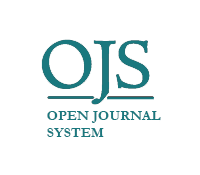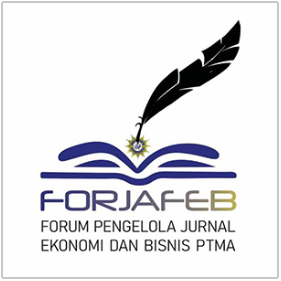Dynamics Of Asean, US, and China Capital Market Relations: Before, During and Post Covid-19
DOI:
https://doi.org/10.22219/jrak.v14i3.34137Keywords:
ASEAN Economic Community, ASEAN's economic integration, Autoregressive Distributed Lag, Regional Capital Market IntegrationAbstract
Purpose: The study aims to uncover the dynamics of the relationship between ASEAN countries (Malaysia, Singapore, Thailand, and the Philippines), the US, and China to the Indonesian capital market.
Methodology/approach: This study uses weekly composite stock price index data for two observation periods: January 2016 to December 2019 (pre-COVID-19) and January 2020 to December 2023 (during and post-COVID-19). The econometric model is analyzed separately for (i) Indonesia and other ASEAN markets, and (ii) Indonesia, the US, and China.
Findings: The ARDL cointegration analysis reveals that before COVID-19, the Indonesian stock market was influenced by Malaysia, the Philippines, and Thailand within the ASEAN data group, while only China had a long-term impact within the Indonesia-US-China data group. In the short term, there was a stronger link between the Indonesian capital market and Malaysia compared to Singapore, the Philippines, and Thailand. After the pandemic, there was a significant increase in the relationship between China's capital market and Indonesia, while the impact of the U.S. stock exchange on Indonesia was considered insignificant in the short term.
Practical implications: This study can help investors and policymakers make informed decisions regarding portfolio diversification and risk management. More importantly, the long-term impact of China on the Indonesian stock market; so investors in Indonesia need to monitor and assess developments in the Chinese market for potential long-term implications.
Originality/value: This study offers new insights into the dynamics of the relationship between the Indonesian capital market and ASEAN, the US, and China; a topic that has been relatively under-researched in the context before and after the COVID-19 pandemic.
Downloads
References
Anhar, M., Maronrong, R., Burda, A., & Ode Sumail, L. (2024). Dynamics of Indonesian stock market interconnection: Insights from selected ASEAN countries and global players during and after the COVID-19 pandemic. Investment Management and Financial Innovations, 21(2), 180–190. https://doi.org/10.21511/imfi.21(2).2024.14
Apollo., & Zulkifli. (2019). Comparative Analysis of Market Returns among Countries in Southeast Asia. EPRA International Journal of Multidisciplinary Research, 5(7), 162–167.
Appiah, M. O. (2018). Investigating the multivariate Granger causality between energy consumption, economic growth and CO 2 emissions in Ghana. Energy Policy, 112, 198–208. https://doi.org/10.1016/j.enpol.2017.10.017
Balassa, B. (1962). The Theory of Economic Integration. George and Unwin, (Routledge Revivals),.
Banerjee, A., Dolado, J., & Mestre, R. (1998). Error-correction Mechanism Tests for Cointegration in a Single-equation Framework. Journal of Time Series Analysis, 19(3), 267–283. https://doi.org/10.1111/1467-9892.00091
Bhowmik, R., Zhu, Y., & Gao, K. (2021). An analysis of trade cooperation: Central region in China and ASEAN. PLOS ONE, 16(12), e0261270. https://doi.org/10.1371/journal.pone.0261270
Bi, S. (2021). Cooperation between China and ASEAN under the building of ASEAN Economic Community. Journal of Contemporary East Asia Studies, 10(1), 83–107. https://doi.org/10.1080/24761028.2021.1888410
Boubakri, S., & Guillaumin, C. (2015). Regional integration of the East Asian stock markets: An empirical assessment. Journal of International Money and Finance, 57, 136–160. https://doi.org/10.1016/j.jimonfin.2015.07.011
Caporale, G. M., Gil-Alana, L. A., & You, K. (2021). Stock Market Linkages between the Asean Countries, China and the US: A Fractional Integration/cointegration Approach. Emerging Markets Finance and Trade, 58(5), 502–1514. https://doi.org/10.1080/1540496X.2021.1898366
Chen, J., & Wang, X. (2021). Asymmetric Risk Spillovers Between China and ASEAN Stock Markets. IEEE Access, 9, 141479–141503. https://doi.org/10.1109/ACCESS.2021.3119932
Chia, S. Y., & Plummer, M. G. (2015). ASEAN Economic Cooperation and Integration : Progress, Challenges and Future Directions. Cambridge University Press.
Chien, M.-S., Lee, C.-C., Hu, T.-C., & Hu, H.-T. (2015). Dynamic Asian stock market convergence: Evidence from dynamic cointegration analysis among China and ASEAN-5. Economic Modelling, 51, 84–98. https://doi.org/10.1016/j.econmod.2015.06.024
Click, R. W., & Plummer, M. G. (2005). Stock market integration in ASEAN after the Asian financial crisis. Journal of Asian Economics, 16(1), 5–28. https://doi.org/10.1016/j.asieco.2004.11.018
Do, H. Q., Ishaq Bhatti, M., & Kónya, L. (2016). On asean capital market and industry integration: A review. Corporate Ownership and Control, 13(2), 8–22. https://doi.org/10.22495/cocv13i2p1
Glick, R., & Hutchison, M. (2013). China’s financial linkages with Asia and the global financial crisis. Journal of International Money and Finance, 39, 186–206. https://doi.org/10.1016/j.jimonfin.2013.06.025
Gugler, P., & Vanoli, L. (2017). Convergence or divergence of prosperity within the ASEAN community? A crucial issue for the success of the ASEAN economic community (AEC) process. International Journal of Emerging Markets, 12(3), 610–624. https://doi.org/10.1108/IJoEM-09-2016-0231
Ishikawa, K. (2021). The ASEAN Economic Community and ASEAN economic integration. Journal of Contemporary East Asia Studies, 10(1), 24–41. https://doi.org/10.1080/24761028.2021.1891702
Kalai, M., & Zghidi, N. (2019). Foreign Direct Investment, Trade, and Economic Growth in MENA Countries: Empirical Analysis Using ARDL Bounds Testing Approach. Journal of the Knowledge Economy, 10(1), 397–421. https://doi.org/10.1007/s13132-017-0460-6
Kang, S. H., Uddin, G. S., Troster, V., & Yoon, S.-M. (2019). Directional spillover effects between ASEAN and world stock markets. Journal of Multinational Financial Management, 52–53, 100592. https://doi.org/10.1016/j.mulfin.2019.100592
Kremers, J. J. M., Ericsson, N. R., & Dolado, J. J. (1992). The Power Of Cointegration Tests. Oxford Bulletin of Economics and Statistics, 54(3), 325–348. https://doi.org/10.1111/j.1468-0084.1992.tb00005.x
Le, T.-H., Vo, L. H., & Taghizadeh-Hesary, F. (2022). A study on the nonlinear dynamics of ASEAN financial integration. Journal of Asian Business and Economic Studies. https://doi.org/10.1108/JABES-03-2022-0040
Lee, C. L., & Takagi, S. (2015). Assessing the Financial Landscape for the Association of Southeast Asian Nations Economic Community, 2015. Asia & the Pacific Policy Studies, 2(1), 116–129. https://doi.org/10.1002/app5.61
Malkiel, B. G. (1989). Efficient Market Hypothesis. In Finance (pp. 127–134). Palgrave Macmillan UK. https://doi.org/10.1007/978-1-349-20213-3_13
Muharam, H., Robiyanto, R., Pangestuti, I., & Mawardi, W. (2020). Measuring Asian Stock Market Integration by Using Orthogonal Generalized Autoregressive Conditional Heteroscedasticity. Montenegrin Journal of Economics, 16(1), 121–137. https://doi.org/10.14254/1800-5845/2020.16-1.8
Nguyen, T. D., & Elisabeta, P. (2016). Financial integration and diversification benefits: China and ASEAN4 countries. Managerial Finance, 42(5), 496–514. https://doi.org/10.1108/MF-12-2014-0300
Nguyen, T. T. H., Phan, G. Q., Wong, W. K., & Moslehpour, M. (2022). The influence of market power on liquidity creation of commercial banks in Vietnam. Journal of Asian Business and Economic Studies. https://doi.org/10.1108/JABES-06-2021-0076
Pesaran, M. H., & Shin, Y. (1996). Cointegration and speed of convergence to equilibrium. Journal of Econometrics, 71(1–2), 117–143. https://doi.org/10.1016/0304-4076(94)01697-6
Pesaran, M. H., Shin, Y., & Smith, R. J. (2001). Bounds testing approaches to the analysis of level relationships. Journal of Applied Econometrics, 16(3), 289–326. https://doi.org/10.1002/jae.616
Phylaktis, K., & Ravazzolo, F. (2005). Stock prices and exchange rate dynamics. Journal of International Money and Finance, 24(7), 1031–1053. https://doi.org/10.1016/j.jimonfin.2005.08.001
Puspitasari, A., Siregar, H., & Andati, T. (2018). Analisis Integrasi Bursa Saham Asean 5. Jurnal Ekonomi Dan Kebijakan Pembangunan, 4(2), 187–206. https://doi.org/10.29244/jekp.4.2.2015.187-206
Qamruzzaman, M., Jianguo, W., Jahan, S., & Yingjun, Z. (2021). Financial innovation, human capital development, and economic growth of selected South Asian countries: An application of ARDLapproach. International Journal of Finance & Economics, 26(3), 4032–4053. https://doi.org/10.1002/ijfe.2003
Robiyanto, R. (2018). Capital Market Integration In Some Asean Countries Revisited. Jurnal Manajemen, 22(2), 205. https://doi.org/10.24912/jm.v22i2.359
Robiyanto, R., Frensidy, B., Setyawan, I. R., & Huruta, A. D. (2021). A Different View on ASEAN Capital Market Integration. Economies, 9(4), 141. https://doi.org/10.3390/economies9040141
Robiyanto, R., Nugroho, B. A., Handriani, E., & Frensidy, B. (2023). Measuring the effectiveness of ASEAN-5 initiatives from emerging market portfolio’s perspective. Cogent Business & Management, 10(1). https://doi.org/10.1080/23311975.2023.2167292
Sharma, S. S., Narayan, P. K., Thuraisamy, K., & Laila, N. (2019). Is Indonesia’s stock market different when it comes to predictability? Emerging Markets Review, 40, 100623. https://doi.org/10.1016/j.ememar.2019.100623
Sharpe, W. F. (1964). Capital Asset Prices: A Theory Of Market Equilibrium Under Conditions Of Risk. The Journal of Finance, 19(3), 425–442. https://doi.org/10.1111/j.1540-6261.1964.tb02865.x
Shrestha, M. B., & Bhatta, G. R. (2018). Selecting appropriate methodological framework for time series data analysis. The Journal of Finance and Data Science, 4(2), 71–89. https://doi.org/10.1016/j.jfds.2017.11.001
Shu, C., He, D., Dong, J., & Wang, H. (2018). Regional pull vs global push factors: China and US influence on Asian financial markets. Journal of International Money and Finance, 87, 112–132. https://doi.org/10.1016/j.jimonfin.2018.04.004
Wolff, P. (2022). The 2030 Agenda and Capital Market Integration in ASEAN. In Sustainable Development Goals and Pandemic Planning (pp. 543–565). Springer Nature Singapore. https://doi.org/10.1007/978-981-16-6734-3_13
Wu, F. (2020). Stock market integration in East and Southeast Asia: The role of global factors. International Review of Financial Analysis, 67, 101416. https://doi.org/10.1016/j.irfa.2019.101416
Yousaf, I., Mensi, W., Vo, X. V., & Kang, S. (2023). Spillovers and connectedness between Chinese and ASEAN stock markets during bearish and bullish market statuses. International Journal of Emerging Markets. https://doi.org/10.1108/IJOEM-07-2022-1194
Yu, I.-W., Fung, K.-P., & Tam, C.-S. (2010). Assessing financial market integration in Asia – Equity markets. Journal of Banking & Finance, 34(12), 2874–2885. https://doi.org/10.1016/j.jbankfin.2010.02.010
Zuan, H., Ellis, D., & Pagliari, R. (2023). Expert insights into the impact of aeropolitics on regional air market integration in ASEAN. Transportation Research Procedia, 75, 240–249. https://doi.org/10.1016/j.trpro.2023.12.027
Downloads
Published
Issue
Section
License
Copyright (c) 2024 Swarmilah Hariani, Abdul Halim, Hendryadi Hendryadi, Roy Budiharjo, Hafiz Abdul Samee Malik

This work is licensed under a Creative Commons Attribution-NonCommercial-ShareAlike 4.0 International License.

Jurnal Reviu Akuntansi dan Keuangan is licensed under a Creative Commons Attribution-NonCommercial-ShareAlike 4.0 International License.
Authors who publish with this journal agree to the following terms:
- Authors retain copyright and grant the journal right of first publication with the work simultaneously licensed under a Creative Commons Attribution-NonCommercial-ShareAlike 4.0 International License that allows others to share the work with an acknowledgement of the work's authorship and initial publication in this journal.
- Authors are able to enter into separate, additional contractual arrangements for the non-exclusive distribution of the journal's published version of the work (e.g., post it to an institutional repository or publish it in a book), with an acknowledgement of its initial publication in this journal.
- Authors are permitted and encouraged to post their work online (e.g., in institutional repositories or on their website) prior to and during the submission process, as it can lead to productive exchanges, as well as earlier and greater citation of published work (See The Effect of Open Access).










